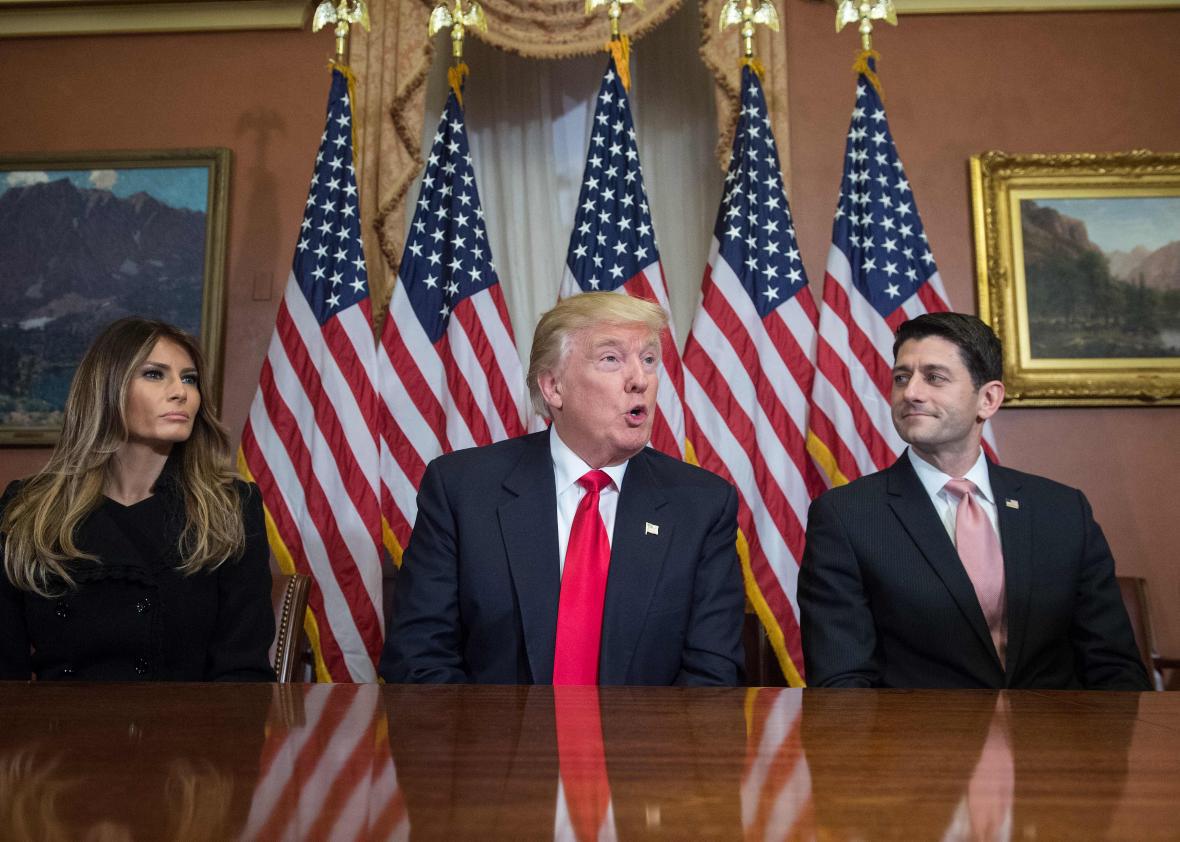In his year-end press conference Monday morning, Senate Majority Leader Mitch McConnell laid out the plan for 2017. Congress will pass two budget resolutions, one for the remainder of the current fiscal year and one for the next, that include reconciliation vehicles—i.e., bills that can be passed without threat of Senate filibuster. The first, as we are all aware, will be used to repeal much, most, or all of the Affordable Care Act, with replacement pending. The second will “largely be dedicated to tax reform,” he said.
Tax reform is House Speaker Paul Ryan’s baby. It was what he wanted to do when he became the chairman of the Ways and Means Committee, before he replaced John Boehner as speaker. There is a lengthy section on tax reform in Ryan’s policy agenda, “A Better Way.” Tax reform is what gets his socks rolling up and down.
Tax reform is also among the more difficult things to legislate. The stakeholders include, well, every person, both corporeal and corporate. The benefits for the latter in “A Better Way” are fairly clear, like a large reduction in the corporate tax rate and a switch to a territorial system in which only domestic income is taxed. “It represents the largest corporate tax rate cut in U.S. history,” the paper says. The tax reform benefits for wealthier Americans are also clear: They will get massive tax cuts, with a lowering of the top income tax rate, a lowering of capital gains and dividend taxes—including repeal of the net investment tax in the ACA—as well as repeal of the estate tax. For starters.
That leaves the question of what’s in tax reform for everyone else, aside from the eleventy billion jobs that will trickleth down upon thee. Well! There will be a beefed-up standard tax deduction and an expanded earned income tax credit. A lot of the pitch, though, will be summed up with the word simplicity. No one likes spending all that time doing his or her taxes; and there are certainly plenty of ways that tax reform can and will simplify and shorten the tax code.
This, however, is not one of them:
This is a terrible example of how the tax code is “complicated,” which doesn’t mean we won’t see it constantly for the next year or so as tax reform is under debate. So let’s get it out of the way now: The tax code is not complicated because there are seven brackets instead of three! This is a difference of a few seconds of work, or if you use a computer program, a difference of zero seconds of work.
Republicans’ vision for tax reform—which, since they’re aiming to passing it through reconciliation, is what the tax reform measure will be—involves flattening the tax code, which makes it more regressive. They will describe this process as “simplification.” If they want to argue that compressing the tax code is a better model for growth, they should do that. But if we see ads in which actors portray regular folks sitting around the kitchen table, ink-stained and surrounded by paperwork and abacuses and slide rules, straining to make sense of all these gosh-darn brackets, well, please spare us. For most earners, anyway, there already are only two or three effective brackets.
